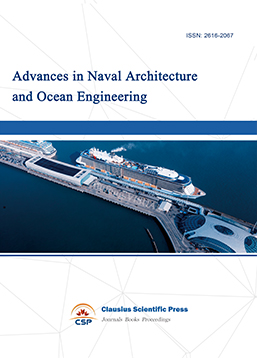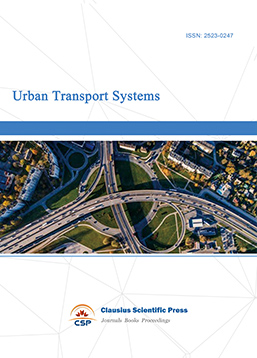A bi-objective location-routing problem for infectious waste reverse logistics during a pandemic
DOI: 10.23977/ftte.2024.040104 | Downloads: 22 | Views: 1294
Author(s)
Kaixu Qian 1
Affiliation(s)
1 School of Tansportation and Logistics, Southwest Jiaotong University, Chengdu, China
Corresponding Author
Kaixu QianABSTRACT
The correct recycling and disposal of medical waste has become increasingly important in society. Especially during the pandemic, the generation of infectious medical waste has shown explosive growth. Therefore, timely and safe collection and disposal have become a key point in the pandemic. This study considers a list of novel infectious waste management measures to face the pandemic, including setting up temporary transfer stations, applying movable disposal facilities, and using emergency disposal centers. With this in mind, this study develops a bi-objective location-routing model for the collection and transportation of infectious medical waste during the pandemic. Linearization of the nonlinear terms in the model is conducted, and the bi-objective model is transformed into a single-objective optimization model using the augmented ε-constraint method (AUGMECON), which is then solved by the CPLEX optimization solver. By analysing the trade-off curve between cost and risk during the pandemic, it is concluded that the solution in the sixth to seventh iteration is Pareto optimal. In summary, this study proposes a comprehensive framework for optimizing the collection and transportation of infectious medical waste during the pandemic and provides an effective solution to this important problem.
KEYWORDS
Infectious waste management; location-routing problem (LRP); Augmented ε-constraint (AUGMECON) methodCITE THIS PAPER
Kaixu Qian, A bi-objective location-routing problem for infectious waste reverse logistics during a pandemic. Frontiers in Traffic and Transportation Engineering (2024) Vol. 4: 26-38. DOI: http://dx.doi.org/10.23977/ftte.2024.040104.
REFERENCES
[1] WHO, (2020). Definitions: emergencies. URL. https://www.who.int/hac/about/definitions/en/.
[2] DE CAMPOS, T. C. (2020). The Traditional Definition of Pandemics, Its Moral Conflations, and Its Practical Implications: A Defense of Conceptual Clarity in Global Health Laws and Policies. Cambridge Quarterly of Healthcare Ethics, 29(2), 205–217.
[3] WHO. (2024).Health-care waste. URL. https://www.who.int/news-room/fact-sheets/detail/health-care-waste#cms.
[4] WHO. (2022). Global analysis of healthcare waste in the context of COVID-19: status, impacts and recommendations. URL. https://www.who.int/publications-detail-redirect/9789240039612.
[5] Windfeld, E. S., & Brooks, M. S. L. (2015). Medical waste management – A review. Journal of Environmental Management, 163, 98-108.
[6] Tata, A., & Beone, F. (1995). Hospital waste sterilization: A technical and economic comparison between radiation and microwaves treatments. Radiation Physics and Chemistry, 46(4-6), 1153-1157.
[7] ReVelle, C., Cohon, J., & Shobrys, D. (1991). Simultaneous siting and routing in the disposal of hazardous wastes. Transportation Science, 25(2), 138–145.
[8] Shih, L.-H., & Lin, Y.-T. (2003). Multicriteria optimization for infectious medical waste collection system planning. Practice Periodical of Hazardous, Toxic, and Radioactive Waste Management, 7(2), 78–85.
[9] Nolz, P. C., Absi, N., & Feillet, D. (2014). A bi-objective inventory routing problem for sustainable waste management under uncertainty. Journal of Multi-Criteria Decision Analysis, 21(5–6), 299–314.
[10] Zhao, J., Wu, B., & Ke, G. Y. (2021). A bi-objective robust optimization approach for the management of infectious wastes with demand uncertainty during a pandemic. Journal of Cleaner Production, 314, 127922.
[11] Tirkolaee, E. B., Abbasian, P., & Weber, G. (2021). Sustainable fuzzy multi-trip location-routing problem for medical waste management during the COVID-19 outbreak. Science of The Total Environment, 756, 143607
[12] Govindan, K., Nasr, A. K., Mostafazadeh, P., & Mina, H. (2021). Medical waste management during coronavirus disease 2019 (COVID-19) outbreak: A mathematical programming model. Computers & Industrial Engineering, 162, 107668
[13] Kargar, S., Pourmehdi, M., & Paydar, M. M. (2020). Reverse logistics network design for medical waste management in the epidemic outbreak of the novel coronavirus (COVID-19). Science of The Total Environment, 746, 141183.
[14] Tasouji Hassanpour, S., Ke, G. Y., Zhao, J., & Tulett, D. M. (2023). Infectious waste management during a pandemic: A stochastic location-routing problem with chance-constrained time windows. Computers & Industrial Engineering, 177, 109066.
[15] Zhao, H., Liu, H., Wei, G., Zhang, N., Qiao, H., Gong, Y., Yu, X., Zhou, J., & Wu, Y. (2022). A review on emergency disposal and management of medical waste during the COVID-19 pandemic in China. Science of The Total Environment, 810, 152302.
[16] Mavrotas, G., & Florios, K. (2013). An improved version of the augmented ε-constraint method (AUGMECON2) for finding the exact pareto set in multi-objective integer programming problems. Applied Mathematics and Computation, 219(18), 9652-9669.
[17] Tasouji Hassanpour, S., Ke, G. Y., & Tulett, D. M. (2021). A time-dependent location-routing problem of hazardous material transportation with edge unavailability and time window. Journal of Cleaner Production, 322, 128951.
| Downloads: | 748 |
|---|---|
| Visits: | 48251 |

 Download as PDF
Download as PDF


